Back in December 2021, the Northern Territory (NT) government granted Major Project Status to water-from-air technology company Aqua Aerem to develop its $15 billion 10 GW Desert Bloom green hydrogen project (Desert Bloom) in Tennant Creek, NT, with ambitious plans for commercial production by 2023. Now Japanese energy giant Osaka Gas has entered into a joint development agreement that puts considerable heft behind the project.
What is more, Aqua Aerem’s chairman and Sanguine managing director David Green has also revealed that it in discussions with other potential partners for the purchase of its green hydrogen, and is in the process of increasing the scale of the project to 20 GW, “to meet the quickly developing demand for green hydrogen as companies position to deliver on their international commitments.”
According to Aqua Aerem (literally ‘water-air’ in Latin), for every one kilogram of hydrogen produced, nine litres of water is required. The company’s patented proprietary technology captures water from the atmosphere in arid environments using off-grid solar energy, with no waste other than air. This commercial quantity of water can then be used in solar electrolysis whereby water is split into its constituent parts, namely hydrogen and oxygen.
Considering the scale of renewable energies required for green hydrogen production, necessarily requiring lots of sun and wind, usually hot and arid regions are best situated. Of course, such regions don’t tend to have much water. Technology which enable significant quantities of water to be obtained from the atmosphere provides a serious advantage, and are demonstrable of the increasingly fecund solar-water nexus.
Desert Bloom aims to utilise that technology to produce green hydrogen for domestic and export markets using off-grid renewable energy generation and atmospheric water.
The joint agreement was ratified on Tuesday and will see the two companies develop the project, which Aqua Aerem said will produce approximately 410,000 metric tonnes of green hydrogen annually when it is completed.
Osaka Gas is no stranger to large quantities, as it is one of the world’s largest gas buyers and distributors, with a global portfolio of energy projects, pipelines and LNG terminals.
“We are pleased to be collaborating with Osaka Gas on the further development of Desert Bloom Hydrogen, which is the most advanced, shovel-ready green hydrogen project in Australia,” said Aqua Aerem CEO Gerard Reiter.
“This deal is a strong endorsement of the massive value of the project and Aqua Aerem’s innovative air-to-water technology, which is opening the door for green hydrogen projects to be located where the best renewable power sources are available, which is generally in the driest areas of the planet.”
NT Chief Minister Michael Gunner welcomed the announcement and noted that the green hydrogen sector was to play a key role in meeting the NT’s economic targets.
“Today’s announcement is great news for the Northern Territory, for Australia and for Japan, as we strive to reach our shared destination of net-zero emissions by 2050″ said Gunner.
“This major project is also providing a big boost to our economy, with around 1,000 jobs to be created during construction and a further 120 once it is operational, and we look forward to marking many more important milestones along the way.”
Atmospheric extraction
The atmospheric water extraction system and hydrogen generation units are contained in multiple modular and portable solar-powered Hydrogen Production Units (HPUs) capable of generating “water, heat, electricity, and hydrogen, meaning each is a set of containerised solutions that can operate independently.” This independence garners versatility as well, and outside of green hydrogen Aqua Aerem sees potential applicability in mining and agriculture, as well as the alleviation of water scarcity.
Unlike desalination, Reiter says the advantages of generating water from air means no grid connection is required, there’s no brine to dispose of, it has fewer inefficiencies and fewer ongoing costs. Considering the water challenge is one of the biggest barriers to green hydrogen production in water-stressed regions with the best renewable resources, this technology could prove a breakthrough.
“Desert Bloom Hydrogen will produce revenue from the installation of the first module and does not require large upfront expenditure, including investment in large infrastructure that may become stranded or suffer from technological obsolesce,” said Green. “As a result of these substantial savings, Desert Bloom will be on track to produce green hydrogen at an export price international customers want to pay – less than $US2/kg within five years.”
“An equitable global energy transition and water security are the key challenges of this generation and Aqua Aerem is well-placed to assist with the expected surging demand for reliable, affordable, green energy and provision of security water supplies.”
This content is protected by copyright and may not be reused. If you want to cooperate with us and would like to reuse some of our content, please contact: editors@pv-magazine.com.
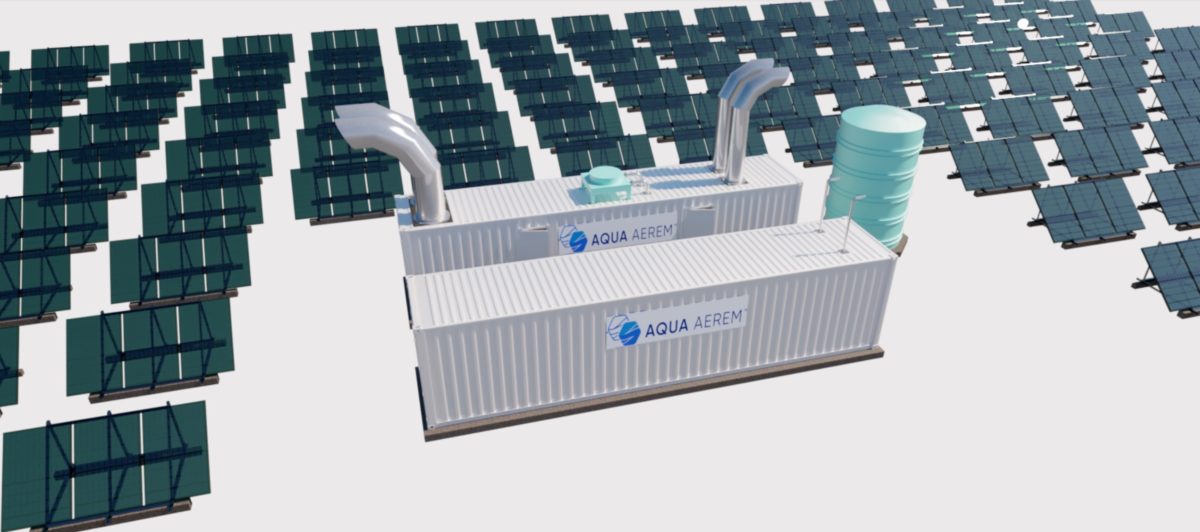
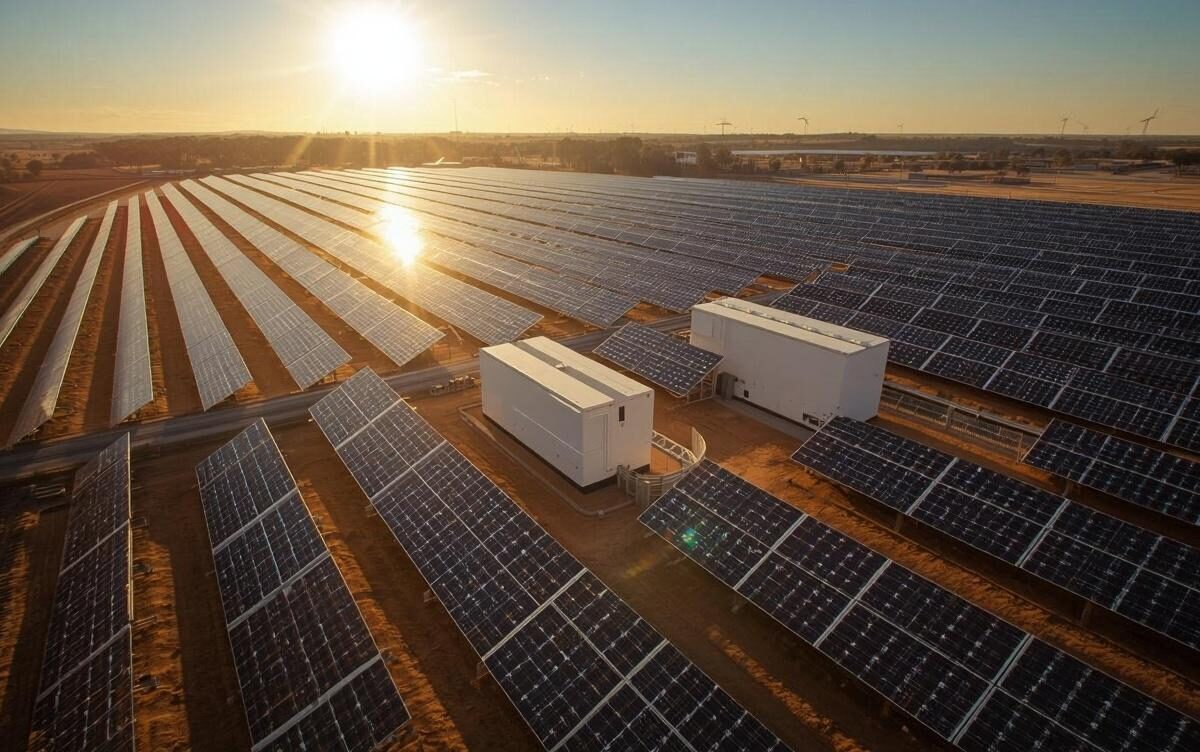


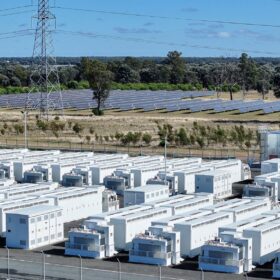

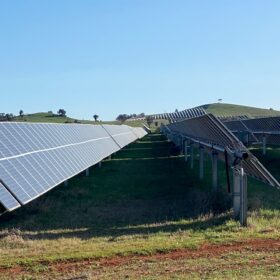
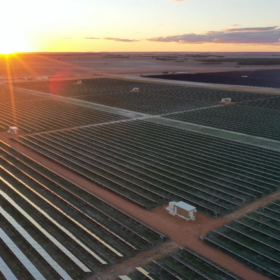
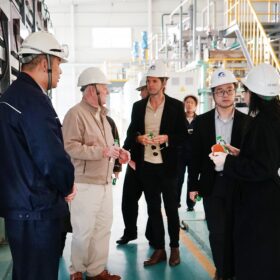
To produce 410,000 metric tonnes of hydrogen will require 3,690,000 metric tonnes of water. Since air contains only about 2% water 184,500,000 metric tonnes of air will need to be cooled below it’s dew point. At 30°C and 50% relative humidity a temperature below 18°C will be required. At 20% relative humidity 4°C will be required. This will require a huge air conditioner.